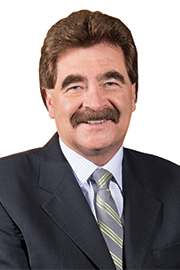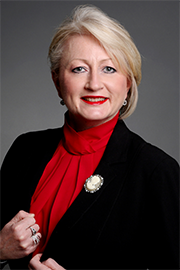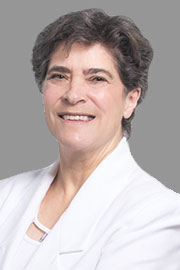- Feb/27/23 1:30:00 p.m.
It’s a pleasure to rise today to respond to this opposition day motion and highlight some of the many investments and new programs our government is making to clear the surgical backlog and improve the patient experience across the province.
Honestly, Madam Speaker, the Leader of the Opposition said, “if only Ontario’s ORs are allowed to operate at full capacity”—well, I can tell you, they are allowed to operate at full capacity. She said that by prioritizing hospital ORs, we’ll be reducing wait times right now. Well, since the beginning of the pandemic, our government has been investing in prioritizing hospital ORs. We’ve invested $880 million in surgical recovery funding, almost a billion dollars, for our hospitals to increase—that’s just for them to increase; that’s in addition to the other funds they get—surgical hours and address procedures that were delayed as a result of the COVID-19 pandemic. That money is to fund more surgeries and diagnostics at hospitals, including opening more operating rooms, more for longer hours, and more on evenings and weekends, when possible.
But hospitals are independent corporations that make their own decisions about how best to use their resources. The government does not dictate how many ORs they open at any particular time on any particular day. That is up to the hospital to decide and to make sure they have the staffing in place to do so.
Although we have put in an extra billion dollars—almost $880 million—so far we haven’t got the backlog cleared. The money has gone some way to clear the backlog, but our government knows that people like Nathan, who was mentioned, are still waiting way too long. We don’t want Nathan to have to suffer, or to wait, or to have five rescheduled surgeries. We don’t think that’s appropriate, and that is why we’re taking more steps. We added an additional $330 million for the hospital surgery backlog this year, for hospital operating rooms.
Unfortunately, we’ve done what the Leader of the Opposition suggests, by prioritizing hospitals and giving them a lot of extra money, but there are limits to what hospitals can do with those resources. They can do as much as they can, and that’s what they’re doing.
But Nathan shouldn’t have to wait, so our government is taking that next step. The next step is making it faster and easier for people to access surgeries and procedures they need, by better integrating and using community and diagnostic centres to increase capacity and to complete more publicly funded services—and these, increasing community capacity, target patients who will have been waiting the longest amount of time for their treatment, and expand available options to receive safe and quality care. This will mean shorter wait times for common but vital surgeries such as cataract and hip and knee surgery—eventually; that will be in 2024—and you can expect, people of Ontario, shorter wait times for diagnostic services, as well, such as MRIs and CT scans. We’re starting by tackling the existing backlog for cataract surgeries, which has one of the longest wait times for procedures.
Just let me take a moment to digress a bit, because the Leader of the Opposition had some story about saving money and said that cataract surgeries cost an OHIP fee of $500 in a hospital, whereas at a for-profit clinic they cost $605. I wrote down what she said. The fact is that a clinic will get a fee that includes a facility fee—that’s maybe the $605, assuming those numbers are accurate; I’ll give her the benefit of the doubt—but the hospital doesn’t just get the $500 OHIP fee. The OHIP fee goes to the doctor performing the surgery, but the hospital gets hospital funding, infrastructure renewal funding, nursing funding and a whole bunch of other funding, and believe me, the clinics don’t get that. They just get the $605 mentioned by the member opposite. So it’s very misleading, I would say, to say that one kind of person is getting more than the other. That is not the way it is. The fee is a $500 OHIP fee plus a facility fee in a clinic.
The other thing I want to point out is that the member said that more than a third of operating rooms in Ontario public hospitals do not meet the 90% target for operating room use. I think she pulled this from a December 2021 report of the Auditor General, so I think that might be dated. However, if we’re going to pull from that report, let me just add this quote from the Auditor General’s December 2021 report: “Studies have shown that outpatient surgeries can be performed more efficiently and cost-effectively when performed in an ambulatory setting. As well, because these ambulatory settings often specialize in a handful of types of surgeries, more can typically be done in a day as compared to the number that are performed in a general hospital setting. For example, a 2014 study released in Health Affairs (a peer-reviewed journal on health policy and research) found that procedures done in ambulatory surgery centres took about 31.8 minutes (25%) less time than those in hospitals. Estimated cost savings ranged from approximately $363–$1,000 per outpatient case, depending on the surgery.” That’s the quote from the same Auditor General’s report that my friend opposite has quoted from. Clearly. there’s a difference of view there.
Madam Speaker, as I said, we’re targeting shorter wait times for common but vital surgeries such as cataracts, hip and knee replacements so the people of Ontario can expect shorter wait times for those things and for diagnostic services such as MRI and CT scans, because this government thinks they’re waiting too long. And we’ve started by tackling the backlog for cataract surgeries—as I’ve said, one of the longest waits for procedures. This past month, we issued four new licences to health centres in Windsor, Kitchener-Waterloo and Ottawa to support an additional 14,000 publicly funded cataract surgeries annually. As I said the other day when I was quoting the member from Thunder Bay–Superior North, people are delighted to not have to wait so long to get their surgeries. They’re very excited to be able to get on with their lives. These additional volumes make up 25% of the province’s current cataract wait-list, and this will significantly reduce the surgical backlog.
In addition to shortening times, providing these publicly funded services through community surgical and diagnostic centres will allow hospitals to focus their efforts and resources on more complex and high-risk surgeries such as Nathan’s surgery. He’ll be able to get in sooner as a result.
We’re also investing more than $18 million in existing centres to cover care for thousands of patients, including 49,000 hours of MRI and CT scans, 4,800 cataract surgeries, 900 ophthalmic procedures of other varieties, 1,000 minimally invasive gynecological surgeries, and 2,845 plastic surgeries. As a result, surgical wait-lists will return to pre-pandemic levels, it is anticipated, by March 2023. And as always, these services will continue to be provided at no cost to the patient, with their Ontario health card.
Beyond all the work our government is doing to address the surgical backlog, we’re also building up our health care system for the future. One of the key investments that we’re making is to achieve this through the expansion of access to primary care. When people have health care available in their communities and in ways that are convenient for them, they’re much more likely to seek and receive the treatment they need when they need it and stay healthier. Delivering convenient care to people in their communities will help Ontario stay healthier by diagnosing illnesses earlier, starting treatments as soon as possible, and keeping emergency wait times down when you and your family need urgent care.
Ontario leads the country in the number of people who benefit already from a long-term, stable relationship with a family doctor or primary care provider. Over 90% of Ontarians has a regular health care provider. But we can do more, and we will do more.
That’s why we’re increasing training opportunities at the same time as expanding team models of primary care across the province of Ontario. Work is already under way to train the next generation of doctors, nurses, personal support workers and other health care professionals in this province.
We’re expanding training spots to more health professionals in Ontario every year, with 455 new spots for physicians in training, 52 new spots for physician-assistant training spots, 150 new nurse practitioner spots, 1,500 additional nursing spots, and 24,000 personal support workers in training by the end of 2023.
This is all very good news for Ontarians. By adding new health human resources to Ontario’s workforce, more team-based care will be made available to Ontarians.
When family physicians work in a team model alongside other physicians, nurses, dietitians, social workers, pharmacists and other health care professionals to deliver programs and services, you get better continuity of care and more access to after-hours care.
We’re increasing the number of spots for physicians to join a team model of care through the expansion of existing family health organizations, and allowing new ones to form. This will add up to 1,200 physicians in this model over the next two years, starting with an additional 720 spots for physicians joining our family health organization model in 2022-23 and 480 spots in 2023-24. These family health organizations will be required to provide comprehensive primary care services, extend evening and weekend hours of practice, and provide more weekend coverage so people can access a family physician when they need it.
Team models of primary care have demonstrated how bringing health care providers together as one team can improve the patient experience and how people access care.
Speaker, another way that we are building on this is through the development of Ontario health teams. Teams of primary care providers, regardless of model, will be central to all Ontario health teams across the province.
Finally, I want to highlight the important work that our government is doing to develop a 10-year capacity plan for health human resources. Last fall, we began our work to develop an Integrated Capacity and Health Human Resources Plan for Ontario. We’re analyzing current gaps in our system, anticipating needs over the next 10 years, and determining solutions to addressing growing health care demands. The plan will focus on how to meet this demand through investment, health human resources and innovative solutions.
This year, we’re building on this work and shifting our focus to working directly with leaders in our health system on a workforce plan that includes where to prioritize current and future resources, addressing and minimizing system gaps, and building a strong health system for the long term. The plan will also look at specific strategies for increasing the number of health care professionals, starting with physician assistants, nurse practitioners, registered nurses, registered practical nurses and medical laboratory technologists, and will also look at the retention of our health workforce through incentives, leveraging programs like our Learn and Stay program as well.
We have more positions open, which was pointed out by the member opposite, but that’s because we are hiring more health care professionals than ever before. That’s what Ontarians want. They want to have more health care professionals delivering more health care as soon as possible.
We will ensure that we have a greater understanding of each community and their local needs and that we have a plan to recruit and retain the health care workers needed, including our family doctors, nurses, specialists and other health providers, in every region of the province. We will begin by prioritizing the areas most in need, like rural and remote communities, where we know gaps already exist.
Ontario’s population is projected to increase by almost 15% over the next 10 years—and this really addresses the comments about how somehow we’ve decided to make a crisis. I don’t think that’s true at all. What I think is that demographics are here, and demographics have a certain reality, and we need to pay attention to those. Ontario’s population is expected to increase by almost 15% over the next 10 years. That alone places significant demands on our health care system. But on top of that significant population growth, much like other OECD countries, we have an aging population. It is well known that we use much more health care resources as we age, and certainly within the last 10 years of life—it generally is considered to be responsible for some 90% of the health resources that we use in our lifetime.
The Conference Board of Canada recently noted that population aging alone will drive 20% of all health-corresponding increases in the coming decade. The population which is age 65-plus is the fastest-growing segment of the population, and especially the group over 85. That population, the group over 85, will increase by 141% between 2022 and 2042. By contrast, the population of seniors aged 75 and older is expected to increase by 49.3%, from 1.2 million to 1.8 million, over the next 10 years. By contrast, the Ontario population of 65-plus will increase from 2.5 million in 2019 to 4.6 million in 2046. It will make up 23% of all Ontarians by that point. That would be one out of four—seniors, people over the age of 65—in Ontario if that comes to pass.
We need to continue to grow our health care workforce to meet the demands of our growing and our aging population. This plan that we have and our significant investments in our health care system will incorporate the lessons we’ve learned from COVID-19 and ensure we are prepared and equipped to meet the health care needs of Ontarians for years to come.
Thank you again for the opportunity to speak, Madam Speaker, to this opposition day motion. I’m confident that the government has a plan, and I think it’s very important that we make sure there is access to surgeries for people like Nathan who are waiting too long.
- Hear!
- Rabble!
- Feb/27/23 1:30:00 p.m.
Further debate?
- Hear!
- Rabble!
- Feb/27/23 1:50:00 p.m.
Thank you very much to the leader of the official opposition for putting forward this important motion.
This government is responsible for breaking our health care system, pushing it to the brink, and driving out nurses and health care workers with their incredible disrespect. As a result, people in Ottawa West–Nepean and around the province are suffering, waiting in pain or poor health for desperately needed surgeries. But instead of fixing the crisis, the government is now trying to sell people an illusion of access to care while they break the public system even further and allow private, for-profit providers to step in and reap profits off of people’s pain. But the government’s so-called solution is a shaky house of cards that falls to pieces if you even look at it too hard.
The government claims that we have to let private, for-profit providers into our health care system because the public system just can’t do it anymore. But in Ottawa, we have operating rooms sitting unused and underused because we don’t have the staff for them. There are over 500 vacancies for nurses currently at the Ottawa Hospital, and without nurses, surgeries just can’t happen. Among the operating rooms that are underused are the ORs at the Ottawa Hospital Riverside campus, which are not used on weekends. But in a deal that was just announced and that just started this past weekend, these publicly funded operating rooms, located in a public hospital, are now being used by private, for-profit surgeons on weekends. It’s bad enough that people are being allowed to make a profit out of space in our public hospitals rather than those spaces being used to expand the number of publicly funded, publicly provided surgeries in Ottawa, but here’s the kicker: When this deal was made, it was claimed that the surgeons would bring in all their own staff. They weren’t supposed to be using the hospital’s nurses or health care workers; only the space was to be used. So this was adding capacity that the public system didn’t have. But what happened instead? Nurses at the Ottawa Hospital are being approached in and around the operating room while they are on shift to ask if they will staff these private surgeries on the weekends. So much for bringing in their own people. So much for the Minister of Health’s assurances that her privatization plan would have no impact on staffing of the public system. What happens now, when the Ottawa Hospital already has more than 500 vacancies and nurses are being asked to take weekend shifts for private providers too?
The minister’s plan has never been about adding capacity; it is only about multiplying profits. The government should rip up this terrible plan, invest in our public hospitals, and recruit, retain and fairly compensate nurses and health care workers so that people in Ottawa can actually get the health care they deserve.
- Hear!
- Rabble!
- Feb/27/23 1:50:00 p.m.
Further debate?
- Hear!
- Rabble!
- Feb/27/23 1:50:00 p.m.
I am so proud of my new leader and the first motion that she brings forward for debate as an opposition day motion, focusing on a program that defines us as Canadians, as Ontarians: medicare. Medicare is a program where we know that if you need to go to the hospital, if you need to see a doctor, you will get the care you need based on your needs, not on your ability to pay. Through the government’s bill, they intend to change all of this. The motion this afternoon is really to show that we have the infrastructure in Ontario—we have the hospitals, the know-how, the technology to help the 12,000 kids who are waiting for surgery right now, the 12,000 kids who are waiting longer than they should to get the surgery they need. We have the knowledge, the skills and the infrastructure to provide people the surgery they need in a timely manner. What we need is a government willing to support our publicly delivered health care system. And this is what this motion speaks to. The motion shows that there are solutions right here, right now in Ontario. You don’t have to wait for the bill to pass. You don’t have to wait to issue requests for proposals so that private, for-profit, investor-owned corporations bid on those and then invest in surgical suites. We have them right here, right now in Ontario, and they’re not being used.
I can talk about Health Sciences North. Health Sciences North is the name of the hospital in Sudbury. Most of the people I represent in Nickel Belt get their surgery done in Sudbury at Health Sciences North. Health Sciences North has 17 surgical suites, fully equipped, negative pressure—all of the equipment is there. They have never been able to open them all. They have only opened 14 of them, and of the 14 of them, not all of them work from 7 a.m. till 4 p.m., like they’re supposed to. Why? Because they never got the resources they needed to do this from the provincial government. Have no doubt, Speaker, many surgeries, the ones that the government is talking about—hip, knee, cataract surgery—are paid by procedures. That means the hospital gets a certain amount of money to do a certain amount of hip surgery, a certain amount of knee surgery, a certain amount of cataract surgery. Once those numbers are reached, they have no more resources to do anything else, and the surgical suite, the OR, sits empty.
I worked in a hospital for a long time. I can guarantee you that before the pandemic and through the pandemic—come February, March, the money is all spent. You gather the wait-list and you start doing surgery again on April 1. Is it because people don’t need the surgery? No. Is it because we don’t have a wait-list? No. It’s because government after government refused to fund those procedures. All of this can change with the political will. All of this can change by passing the motion that my leader has brought forward. Rather than spend millions and millions of dollars on corporate profits, invest that money in all of the hospitals. The 52 large community hospitals all have OR rooms sitting empty. They all had room to do more surgery, even through the pandemic, and the little bit more money that came—they all have empty surgical suites that could see more people, if only they had a government willing to help all of those people. But no, we have a government bound and determined to use the crisis that they created in our health care system to give private, for-profit, investor-owned corporations the opportunity to make millions upon millions of dollars on the backs of sick people.
Interjection: Shameful.
Have no doubt, Speaker: When you are sick, when you are in need of surgery, you are not an average consumer who will go to—no. You trust the physicians in front of you, and you want the surgery to be done as fast as possible. If the privately owned, for-profit, investor-owned corporations only do the healthy and the wealthy and are able to give you a shortened wait time because—this is not new to Ontario. It has been tried—I had the exact number—I think in 35 OCDE countries before. It always leads to the same thing: The healthy and the wealthy get to the front of the line in the privately owned investor corporation’s surgical suites in the community, and the rest of us wait longer. God forbid you have a mental health or a substance use issue; you’re not welcome in there. God forbid you have a cognitive impairment; you’re not welcome in there. If you are overweight, have diabetes, have COPD, don’t speak English, you’re not welcome in there. You wait in our hospitals.
All of this could change. Give our hospitals the resources you’re about to send to rich investors. Put it in our publicly delivered hospitals. You can do this this afternoon. You can do this today. They are ready, willing and able. Plus, you would make sure that our hospitals continue to have the staff available to be there 24/7, on weekends, on statutory holidays, on evening shifts, on night shifts. People don’t always pick the time when they get sick. They don’t always pick the time when they—God forbid—have a big accident and need to be brought to emerg.
Do you know what happens when you don’t fund hospitals properly and they’re not able to respect their nurses, because they have Bill 124 that they cannot get rid of? Nurses leave. They are human beings just like all of us. They are human beings who care for us. But when you can offer them a Monday-to-Friday, 9-to-5 job—no more night shifts, no more weekends, no more statutory holidays, no more looking for a babysitter in the middle of the night? “Oh, my God, I’m going to take that job.” And then there’s nobody to be there for you in the middle of the night when you take sick. There’s nobody to staff the ER. There’s nobody to staff the different wards.
You can change all of that. Pass this motion. Make sure that we keep our staff, that we respect the people who work in our hospital system, by getting rid of Bill 124 and we don’t bring them to court after it has been already ruled as unconstitutional. Show them a bit of respect, and you will be surprised at what they can do. But more than anything else, send money to our hospitals. Don’t tell Health Sciences North, “You get 600 cataract surgeries this year—that’s it, that’s all,” when we have another 800 people waiting for cataract surgery this year. Don’t tell them, “You can have 160 hip surgeries this year,” when we have a wait-list of 300 people who need hip surgery, when we have ORs that are not open, when we have people willing and able to do those surgeries but no money for Health Sciences North to provide those surgeries.
Change that today. Do the right thing. Show us that you believe in medicare; that you believe that care should be based on need, not on ability to pay; that you believe that, no matter where you live in Ontario—even if, like me, you live in rural, northern Ontario—you are allowed equity of access to our health care system. Do that today by passing this motion.
- Hear!
- Rabble!
- Feb/27/23 2:00:00 p.m.
Further debate?
- Hear!
- Rabble!
- Feb/27/23 2:00:00 p.m.
I want to talk about the ethics of where the funding is going and where the funding is not going. The intentional underfunding of health care in Ontario is unethical, and we have proof of that.
I often say that a budget is a moral document and when you follow the money you follow the real priorities.
The FAO has predicted that over the next three years, there will be a $5-billion shortfall in health care funding. This is based on your expectations, as well. The government allocated $3.5 billion in contingency funds. Contingency funds are not transparent. They are not assigned to anything. This is very different than a surplus. This government of Ontario has the money to address the surgical backlog. They have it in hand, and they are choosing not to use it.
The FAO projects improving budget surpluses over the next four years, growing to $7.6 billion. You are growing your surpluses off the pain of the people of this province. It is deeply disturbing when the government has a significant amount of money that they are choosing not to invest.
The FAO has said that the government’s increased use of contingency funds is not a transparent way to budget, as it makes it more difficult for the public to know what the plans are and where the money is going—which is exactly the direction that the government is going in. They want these dollars to go to the very shareholders who have come to various events that this government has hosted. They have pitched it, and this government has said, “Do you know what? We’re going to choose you, the corporate interest in health care, over the people we serve.” This is intentional. It is a strategy that this government is using—but if we only had those mandate letters, where it will clearly, I’m sure, articulate what is happening in the province of Ontario. Has this government released those mandate letters? No. In fact, they have lost in court four times. They’re wasting your money to hide their own intentions as a government.
One of the other things that is happening in Ontario is that of the $1 billion promised for community care, only $130 million has been spent. Communities in all of our ridings are going to be cutting Meals on Wheels, community-based programs. These programs keep people out of hospital. That is the smart investment in health care—people staying healthy.
So this government’s pattern is very clear, and I think that’s why it’s so heartbreaking for some of us who have fought these battles for public health care.
I’ll leave you with this quote from economist Armine Yalnizyan. She said, “We don’t need an action plan for corporate profit and control, using public money. We need to improve the public system.”
That’s what this motion is about today, and that’s why this government should be supporting it.
- Hear!
- Rabble!
- Feb/27/23 2:00:00 p.m.
First, I’m going to start off by thanking Tommy Douglas, who brought us publicly funded, publicly delivered health care.
I had a speech done, but I’m going to talk about two issues—and one is because it was raised by the opposition. I’m going to talk about a place called Shouldice.
This is how it’s going to work when it comes to private health care. I had a hernia a few years ago. I could have went to Shouldice. I didn’t have any extra—diabetes or something. My heart at that time was good—not so good now. But I decided to go to a publicly funded, publicly delivered hospital in Niagara Falls to get my hernia done. It cost $4,000. If you go to Shouldice—and this is what the problem is when we go to private—it’s somewhere between $18,000 and $20,000. So instead of that $14,000 going back into publicly funded, publicly delivered—does anybody know where that extra money is going?
Interjection: Shareholder pockets.
Interjection: That’s exactly what happened.
Now I’m going to tell you a personal story, because I think it’s important to relate. Some of these people here aren’t as old as I am. I’m going to tell you what happened to my mom and dad. When I was growing up, I lived in poverty. I never understood why. We had the neighbours come and bring us food. I remember the firefighters coming and bringing me Christmas presents. Then I got talking to my sister and the rest of my family. We were sick—I had five brothers and sisters—five. My sister Irene had a hole in her heart, my brother had some mental and physical challenges, and my parents had to pay for their health care costs, because at that time there was no Tommy Douglas who said, “No, this is wrong, that we’re going to have people have to pay.” Do you know what happened? We lived in poverty for a long time, and it wasn’t my mom’s fault, it wasn’t my dad’s fault, because my mom and dad worked. They worked seven days a week. They worked very hard, but what happened is, every penny they were getting was to pay for their medical bills.
Do you know what the biggest day in my mom and dad’s life was? After 30 years, they paid off the medical bills for our family—30 years. And I’m challenging anybody in this House—because that’s what’s going to happen if we destroy our publicly funded health care system. It’s not going to be the rich who are going to suffer, because they’re always going to have lots of money; it’s going to be the poor and the less fortunate in our society, families like mine—30 years to pay off their medical bills.
My dad got his first car after 35 years. His first car was a standard—it was an ugly car, by the way, but it was a car. He was so proud that he was able to drive us.
So please rethink what you’re doing. Support Tommy Douglas—the greatest Canadian ever in this country, voted by Canadians. Don’t go the wrong way, because if you guys continue to go down this road—
Interjection.
If you continue to go down this road, you are going to get defeated in the next election, because everybody who has took on publicly funded, publicly delivered health care—that’s what has happened to them. You’re going to have the same thing happen to you that happened to the Liberals when they privatized hydro: You’ll be down to a van.
- Hear!
- Rabble!
- Feb/27/23 2:10:00 p.m.
The Conservative government is eroding our public health care system. With medicare, our health care is based on our needs, not on our ability to pay. This Conservative government is jeopardizing that by not prioritizing public health care and publicly funded operating rooms. Their bill, ironically entitled Your Health, puts profit over people, over your health, and literally allows big corporations, private shareholders and private clinics to make big profits off the backs of sick people. And make no mistake: Those sick people include the very burnt-out front-line health care workers—mostly women, mostly Black and racialized—that this government has attacked since the beginning of this pandemic by not providing them with the N95 masks they needed desperately to save their lives; by not legislating the paid sick days they needed so they didn’t have to go to work sick; and bleeding them dry with Bill 124, which attacked their wages, while ensuring they worked in chronically understaffed, under-resourced and unsafe working conditions, and while this government simultaneously created legislation to protect bad-faith, for-profit long-term-care operators from being sued by families of deceased elders left to die in their own feces—starving, dehydrated, alone.
Friends, this government has never prioritized your health. Instead, their master plan is the privatization and the profitization of health care.
This government’s health care privatization bill does nothing to address the staffing shortage crisis in our public health care system, and in fact it’s making the surgical backlog and wait-lists longer.
Rather than invest in our public hospitals, this government underfunds public hospitals, which has caused a mass exodus of our nurses, RPNs, doctors, surgeons, PSWs and health care professionals into the for-profit private clinics and hospitals, where, yes, they’re paid two, three, four times—maybe sometimes even more. But the oversight and patient protections, should something go wrong in these independent health facilities that are not connected to hospitals, are severely compromised, if present at all.
All this is happening while this Conservative government has sat on, and is still sitting on, hundreds of millions—billions—of contingency funds they could be using to invest in public health care. How do you hoard cash while people are literally dying—and dying in pain—waiting for years for surgeries, while operating rooms in our public hospitals sit empty? ERs are shutting down left, right and centre. Seniors are being charged thousands of dollars for OHIP-covered surgeries. I don’t know how the Conservatives sleep at night.
I’ll end with the words of thousands of ONA nurses and health care professionals I joined last week: Beds don’t save people; nurses save people. Safe staffing saves lives. Better staffing, better care, better wages will save our public health care system—not this Conservative government’s health care privatization scheme.
- Hear!
- Rabble!
- Feb/27/23 2:10:00 p.m.
It’s a pleasure to rise in the House today to discuss our investments in Ontario’s health care system and how our government is expanding access to convenient care across the province.
Since 2018, we have added 3,500 more hospital beds, and we’re not stopping there. We are moving quickly to expand and modernize Ontario’s hospitals to ensure you are able to connect to quality care when and where you need it. Our investments over the next 10 years will lead to $40 billion in health infrastructure across the province. These investments will increase the number of people hospitals can care for, build new health care facilities, and renew existing hospitals and community health centres.
As of the end of 2022, we have already approved 50 hospital development projects that will create more than 3,000 new hospital beds in communities across the province by 2032.
We are also investing $182 million this year to support vital repairs, maintenance and upgrades in Ontario’s hospitals.
New and redeveloped hospitals with more space to care for patients will ultimately lead to shorter wait times and less hallway health care.
Depuis 2018 nous avons ajouté 3 500 lits d’hôpital supplémentaires, mais nous ne nous arrêtons pas là. Nous agissons rapidement pour agrandir et moderniser les hôpitaux ontariens afin de garantir que vous pouvez trouver des soins de qualité au moment et à l’endroit où vous en avez besoin.
De nos investissements au cours des 10 prochaines années découlera une infrastructure sanitaire de 40 milliards de dollars à l’échelle de la province. Ces investissements augmenteront le nombre de personnes que les hôpitaux peuvent soigner, construiront de nouvelles installations de soins de santé, et renouvelleront les hôpitaux et les centres de santé communautaire existants.
À la fin de 2022, nous avions déjà approuvé 50 projets d’aménagement d’hôpitaux, qui créeront plus de 3 000 nouveaux lits d’hôpital dans les collectivités de la province d’ici 2032. Nous investissons aussi 182 millions de dollars cette année pour effectuer des réparations, de l’entretien et des modernisations de nature essentielle dans les hôpitaux ontariens. Les hôpitaux nouveaux et réaménagés avec plus d’espace pour soigner des patients entraîneront, en définitive, des temps d’attente plus courts et moins de soins de santé de couloir.
Speaker, while wait times in Ontario emergency departments are below national averages, we continue to find innovative ways to reduce wait times and make it faster and easier for Ontarians to access timely care.
The member from Nickel Belt noted in her comments that hospitals receive a certain amount for a number of hip and knee surgeries.
Our government has provided $880 million—almost $1 billion—more to get surgeries done, and they can apply for more to get it done.
The member from Niagara Falls spoke about Shouldice, which is a private care facility and has nothing to do with Bill 60. We are not expanding private hospitals, full stop.
We know that to ensure you have faster and easier access to the care you need, we need to better connect you to care within your own community. Our work to better connect and coordinate care for you is under way with the expansion of the Ontario health teams across the province. Throughout the pandemic, Ontario health teams demonstrated the importance of health providers working together to care for patients. With their leadership, communities across the province were able to establish community COVID-19 testing sites, vaccination programs and other vital services. Across the province, 54 Ontario health teams are working to improve transitions between health care providers and are also ensuring a patient’s medical record follows them wherever they go for care. They are also focused on embedding home care and primary care services so that you and your family can get care in your home or in your community.
Applications for four additional Ontario health teams are currently being reviewed. Once approved, these remaining teams will result in the province achieving its goal of full provincial coverage, ensuring everyone has the support of an Ontario health team.
With an investment of more than $106 million, Ontario health teams are also investing in digital and virtual care. These are options so that you can easily connect with a health care worker when you need to from the comfort of your home. Beginning with a focus on helping people who suffer from chronic illnesses, like congestive heart failure, chronic obstructive pulmonary disease, stroke and diabetes, Ontario health teams are developing stronger care pathways for patients. Through Ontario health teams, patients who need support for a chronic illness will receive greater care throughout the life cycle of their treatment, from screening and prevention to community support and recovery at home. A big focus of this will be better support at home or in the community, outside of hospitals. Prioritizing chronic disease management as a community or home care service will reduce hospital wait times and free up hospital beds for more patients in need.
Nous savons que pour nous assurer que vous avez rapidement et facilement accès aux soins dont vous avez besoin, nous devons mieux vous aiguiller vers des soins au sein de votre propre collectivité. Notre travail pour mieux interconnecter et coordonner les soins à votre profit est en cours avec l’élargissement des équipes Santé Ontario à l’échelle de la province.
Tout au long de la pandémie, les équipes Santé Ontario ont démontré l’importance d’avoir des fournisseurs de soins de santé qui travaillent ensemble pour soigner les patients. Grâce à leur esprit d’initiative, des collectivités de toute la province ont pu mettre sur pied des sites de dépistage de la COVID-19 en milieu communautaire, des programmes de vaccination et d’autres services essentiels.
À l’échelle de la province, 54 équipes Santé Ontario oeuvrent à améliorer les transitions entre les fournisseurs de soins et s’assurer que le dossier médical d’un patient suit ce dernier, peu importe où il va pour obtenir des soins. Elles veillent également à intégrer les services de soins à domicile et les soins primaires afin que vous et votre famille puissiez obtenir des soins chez vous ou dans votre collectivité.
Les candidatures de quatre nouvelles équipes Santé Ontario sont présentement à l’étude. Une fois approuvées, ces équipes permettront à la province d’atteindre son objectif de couvrir entièrement son territoire, garantissant que tout un chacun profite du soutien d’une équipe Santé Ontario.
Grâce à un investissement de plus de 106 millions de dollars, les équipes Santé Ontario investissent également dans des options de soins numériques et virtuelles afin que vous puissiez facilement être aiguillé vers un travailleur de la santé lorsque vous en avez besoin, dans le confort de votre foyer.
En commençant par mettre l’accent à aider les personnes atteintes de maladies chroniques comme une insuffisance cardiaque congestive, une maladie pulmonaire obstructive chronique, un accident vasculaire cérébral et le diabète, les équipes Santé Ontario élaborent des cheminements cliniques plus solides pour les patients.
Grâce aux équipes Santé Ontario, les patients qui ont besoin de soutien pour une maladie chronique recevront davantage de soins durant toute la durée de leur traitement, du dépistage et de la prévention au soutien communautaire et au rétablissement à la maison. Elles veilleront particulièrement à offrir un meilleur soutien à domicile ou en milieu communautaire, hors de l’hôpital. Prioriser la gestion des maladies chroniques en tant que service de soins en milieu communautaire ou à domicile réduira les temps d’attente à l’hôpital et libèrera des lits d’hôpital pour un plus grand nombre de patients qui en ont besoin.
Maintenant je voudrais bien lire une citation de Kavita Mehta, PDG de l’Association of Family Health Teams of Ontario : « Les soins primaires sont le fondement de notre système de soins de santé et les soins primaires en équipe offrent des services complets dont les Ontariennes et les Ontariens ont besoin. Nous sommes ravis de voir le nouvel investissement dans les soins primaires offerts en équipe, y compris les équipes de santé familiale, dans l’annonce d’aujourd’hui et nous nous réjouissons de travailler avec le gouvernement et nos partenaires et fournisseurs de soins primaires dans toute la province pour élargir l’accès aux soins primaires offerts en équipe. »
Speaker, thank you again for this opportunity to speak to our investments in hospitals and the amazing health care workers, who are unwavering in their commitment to keep our communities healthy.
I’d like to close today by thanking all the health care workers in my riding of Newmarket–Aurora for all of your incredible work. Thank you for everything you do. Merci de tout ce que vous faites.
- Hear!
- Rabble!
- Feb/27/23 2:10:00 p.m.
I’m going to try to bring a slightly different perspective to the debate today when we’re talking about operating rooms.
Many may not know that I was a dental assistant before I was elected. I’ve talked to the dental community, both in Windsor and across the province, and one thing we’re hearing is that kids who rely on the Healthy Smiles program to get treatment—kids with developmental and intellectual disabilities who have to be hospitalized, who have to be put into an operating room and need anesthesia for them to provide the safe procedures—aren’t getting the care because these dentists can’t get OR time, even though those operating rooms are sitting empty with the lights off. And they are telling me what we’re telling this government, what the nurses are telling the government, what other health care workers are telling the government: With Bill 124 hanging over their heads—they’re driving health care workers out of the field. In my area, they’re pushing them into the United States, where they’re paid, where they’re respected. So that’s something I want this government to think about. They’re talking about cataracts and hip surgeries, but there are children in desperate need of dental care who are not getting it because this government will not treat health care workers with respect and properly fund the system.
Speaker, one last thing that I want to say: This government says that privatization—or profitization—of care is innovation. It’s not innovation; it’s the oldest game around. It was only maybe a decade before I was born that universal health care came in. For centuries before that, it was privatized and profitized. It is the oldest game in town and, frankly, a cop-out for this government to say that that is innovation. Innovation is the researchers and the medical professionals who are doing the work to find cures and treatments for diseases. It’s the health care workers who go in short-staffed every day and still figure out how to provide the best care that they possibly can to people.
Speaker, there are no apologies from this side of the House for not trusting the government, when all we have to do is look at what they’ve done with long-term care, where they further privatized and profitized long-term care, where over 5,400 people died because of for-profit care in long-term care. The government’s response to that was to bring in and pass legislation to protect those for-profit operators from being sued by the families who lost loved ones because of this government’s neglect.
- Hear!
- Rabble!
- Feb/27/23 2:10:00 p.m.
Further debate?
- Hear!
- Rabble!
- Feb/27/23 2:30:00 p.m.
I want to thank the leader of our party, the MPP for Davenport, for putting this motion on the floor today.
I want to thank our health critic, the member for Nickel Belt, for so articulately saying what is really at risk right now in this moment: It is the well-being of our hospitals—let’s be very clear—because if you take these surgeries, 50% of available surgeries, and you hand them as a gift to Tory-run, private, for-profit clinics, you jeopardize the funding of our hospitals.
Do you know who’s not fooled, Speaker? Rachel Muir is not fooled. Rachel Muir is the president of ONA Local 83 back home. She leads all the nursing units at the Ottawa Hospital campuses. Rachel texted me Friday night with a revelation: A private for-profit clinic was going to be operating for the first time the following morning, at 7 a.m., at the Riverside campus of the Ottawa Hospital. She learned about it because members of her union had been approached, as the member for Ottawa West–Nepean just said, in the hospital, near the ORs, about whether they would work in this private, for-profit organization running out of a public facility. So I’ve just learned, if you’re a health care professional, how you get a raise under this government—it’s not at the bargaining table, with Bill 124 and all the assistance they give their lawyers fighting people in court; you go for 100 bucks an hour, and you work for one of the private operations run by one of their friends. That’s how you get a raise from this government. Well, guess what? Rachel sees through them.
Do you know who else sees through them, Speaker? Marilena Fox. Marilena Fox is a recording secretary of CUPE 4000. That is the group that represents almost all the workers at the Riverside campus of the Ottawa Hospital.
Did anybody ask people in administration, housekeeping, patient transportation, foodservice, trades, nursing, personal care attendants and orderlies—were any one of these people approached by the Ottawa Hospital or this government, the Ministry of Health, before they embarked on this for-profit experiment in our public system? What do you think, colleagues? Not a single one. And yet they call them heroes in this place. I just heard it over there: “We love our nurses. We love our orderlies.” It’s a load of nonsense if you walk into their workplaces and disrespect them.
This Thursday, the nurses will be rallying outside the Sheraton hotel here in this great city of Toronto. And the members of the New Democratic Party are going to be with you, nurses. We’re going to be with you, CUPE. We’re going to take on this government and embarrass them the way the education workers of CUPE did in November. Get ready for a very, very hot winter.
- Hear!
- Rabble!
- Feb/27/23 2:30:00 p.m.
The Ford government is opening the doors to for-profit corporations that are, first and foremost, in the business of making money for their shareholders. They will do this by encouraging people to pay extra to jump the queue. They will generate profits by trying to convince people they should pay for unnecessary tests.
I’d like to take a moment to revisit when long-term care was turned into a profit-driven business. When the Harris Conservative government sold off long-term care, they promised that all would be well for seniors and people with disabilities living in these homes, but that was far from reality, and it is still far from reality. Profits in long-term care are made by skimping on staffing, supplies, the quality of food, and poor hygiene standards. We saw the results during the pandemic, when members of the Armed Forces reported the appalling conditions that led to so many deaths. And the profits are scooped up through a particular packet of taxpayer funding that does not have to be accounted for. Will wonders never cease? Guess what? Instant profits at the expense of care for residents of long-term care, provided by our government out of taxpayer dollars—immediately go into the profits of long-term-care corporations and doesn’t have to be accounted for. It doesn’t have to be returned if it’s not spent on care.
Let me be clear: There’s no problem with grouping certain kinds of surgeries together for efficiencies within the public system. But there’s nothing in Bill 60 that requires the regulation of private clinics. The shiny new clinics will look nice on the outside, but like American health corporations, their singular goal will be to make money quickly. Frankly, that is never a good situation for the well-being of any society—when profits are more important than care.
As the government shifts surgeries to for-profit clinics, health care workers tell us public operating rooms are under capacity and sit empty largely due to underfunding and lack of staff. We know why there’s a lack of staff: Bill 124. What is now being recognized as “nurse abuse syndrome,” a form of PTSD, is the result of nurses being disrespected, underpaid, overworked and burnt out—the effects of Bill 124.
New nursing graduates are leaving after two years and some are even quitting after their very first placements, when they see the extreme workload first-hand along with how badly nurses are treated. Many nurses are also leaving to work for private agencies because they can work fewer hours and be better paid. It makes sense. In fact, I heard this past week from our local rehabilitation hospital that, regretfully, they are completely dependent on nursing agencies now, even though they cost three to four times as much as staff nurses, because so many nurses have left the field in frustration and despair. There would be no market for these nursing agencies if nurses weren’t being pushed out of the profession by this government’s unconstitutional wage repression bill.
Speaker, our motion today calls for the government to stop the dangerous road they are going down and to utilize our existing operating rooms by paying staff properly and bringing staff back so that Ontarians can receive the universally accessible, safe, quality care they need and deserve.
- Hear!
- Rabble!
- Feb/27/23 2:30:00 p.m.
Speaker, I rise today to support this motion. My colleagues have explained some of the many reasons why this is necessary.
We have operating rooms that are sitting empty because we don’t have the workers needed to staff them. At best, this is incredibly problematic, fiscal mismanagement on the part of this government.
In Ontario, when you look at our operating rooms—it’s like a person who has a beautiful, high-end car and decides to go and park it out in a field so they can get into somebody else’s tired old limousine that won’t take them where they want to go and will charge them extra once they get there.
Bernie Robinson, ONA’s interim president, said it best: “There is no health care without the dedicated care from nurses and health care professionals. A bed is just a bed without the staffing and support to ensure the patient is receiving quality care.”
It’s clear that this government has no plan to actually address the health care crisis. Look at what happened in Walkerton. Look at what happened in Chesley. Look at what happened in Listowel. They are shortchanging rural and small hospitals, and they’re shortchanging health care. Look at the 80 ER closures over the summer.
Across the province, we heard during the pre-budget consultation that Ontarians want this government to invest in a health care human resources strategy. We have the lowest nurse-to-patient ratio per capita in the entire country.
Shortly after I was elected, I was approached by seniors who had been waiting years—years—in pain for joint replacement surgeries. They were left languishing on that wait-list as a result of the Liberal government, who put those arbitrary caps on the amount of time that they could spend in those ORs. And this government is going down the same path. It’s not the answer.
This government could say yes today—they could say yes to a plan that can be implemented immediately—but they keep saying no. They want people to settle for a system that’s less effective and that will cost them more. They want to waste money. It’s wasteful to underuse our public health care infrastructure. We on the official opposition side want people to expect more. Let’s not go backwards.
I urge my friends across the aisle to protect our values, protect Ontario’s integrity, protect our health. Let’s build a province where companies want to invest. What is required is a publicly funded, publicly delivered health care system so companies know they have a healthy workforce, so they don’t have to pay for that extra—an educated workforce, so they don’t have to always retrain.
Support this motion today. Say yes.
- Hear!
- Rabble!
- Feb/27/23 2:30:00 p.m.
Further debate?
- Hear!
- Rabble!

- Feb/27/23 2:40:00 p.m.
The ayes are 33; the nays are 66.
- Hear!
- Rabble!
- Feb/27/23 2:40:00 p.m.
Further debate?
All those in favour of the motion will please say “aye.”
All those opposed to the motion will please say “nay.”
In my opinion, the nays have it.
Call in the members. There will be a 10-minute bell.
The division bells rang from 1453 to 1503.
MPP Stiles has moved opposition day number 1.
All those in favour of the motion will please rise one at a time and be recognized by the Clerk.
Motion negatived.
Resuming the debate adjourned on February 23, 2023, on the motion for second reading of the following bill:
Bill 60, An Act to amend and enact various Acts with respect to the health system / Projet de loi 60, Loi visant à modifier et à édicter diverses lois en ce qui concerne le système de santé.
It’s now time for questions and responses from the speech by Ms. Bell.
A quick question and response, the government side?
- Hear!
- Rabble!
- Feb/27/23 2:40:00 p.m.
It’s always an honour to rise in the House—and today, specifically, in support of the leader of the NDP’s motion. I’d like to read the last “therefore” into the record once again: “Therefore, the Legislative Assembly calls on the government to fund and fully utilize public operating rooms instead of further privatizing hospital operating room services.”
In my part of the world, in northern Ontario, Health Sciences North is the hub hospital. They have 17 modern operating rooms, and they’re using 14. The question I have for the government is, why wouldn’t the focus be on using all 17? They’re there. They’re built. The need is there. We all agree—everyone on all sides of the spectrum agrees—that there is a backlog of surgeries. I’m going to focus on these three operating rooms: We have those operating rooms in place. They’re modern. What’s the holdup? Staff and funding. Who provides the funding? The Ministry of Health, through the provincial government. Yet that seems to be not the focus, and the focus is now providing surgical suites through the private sector.
You have to ask yourself—and I pride myself; I’m fairly business-minded. From the business perspective of the province, the smart thing to do would be to use the facilities that you already own and control. That would be—I hate to say this—the small-c conservative thing to do.
Interjections.
This government is focusing on someone else’s business model—and that is the question that needs to be asked: Why does this government not use the facilities that we already own and control? All they have to do is fund them. Put the same focus on funding those facilities as they are putting on funding the private sector facilities, and also put the focus on making sure that they keep staff in the public sector by not capping their wages, knowing full well—and I don’t blame the individual staff people, the nurses, for moving to the private side. They’re being forced to the private side. The government knows this is happening, and they’re either turning a blind eye or they know full well and have a reason to do it.
- Hear!
- Rabble!
- Feb/27/23 2:40:00 p.m.
I want to start by thanking all the members of the official opposition here, in the NDP, for their very strong and effective arguments for why this government, the members opposite, should support this important motion. I’m very proud to sit here with all of you and to have your support.
Speaker, we heard this afternoon that the option is there—the option is, fully fund and fully utilize our public operating rooms, fully fund and support our staff to expand the number of shifts in the public system, keeping our nurses here in Ontario rather than having them become, as I’ve mentioned before here, Ontario’s greatest export right now. All of that is there. The option is there. But what is missing is the political will to get it done. This is about choice. This government has chosen not to spend money on public health care. They’ve chosen to create a crisis, and as the member from Waterloo said, they have, in fact, squirrelled away billions and billions of health care dollars rather than spend them to fix the crisis. This crisis could be fixed today. This problem could be solved today if this government chose to put patients ahead of profits, if they chose to put patients and public health care ahead of their political ideology. We could do better. We could serve the people of this province well. And we wouldn’t have people waiting for surgeries, looking to the private health care system now for solutions.
I hope I can count on the government to support this motion.
- Hear!
- Rabble!














